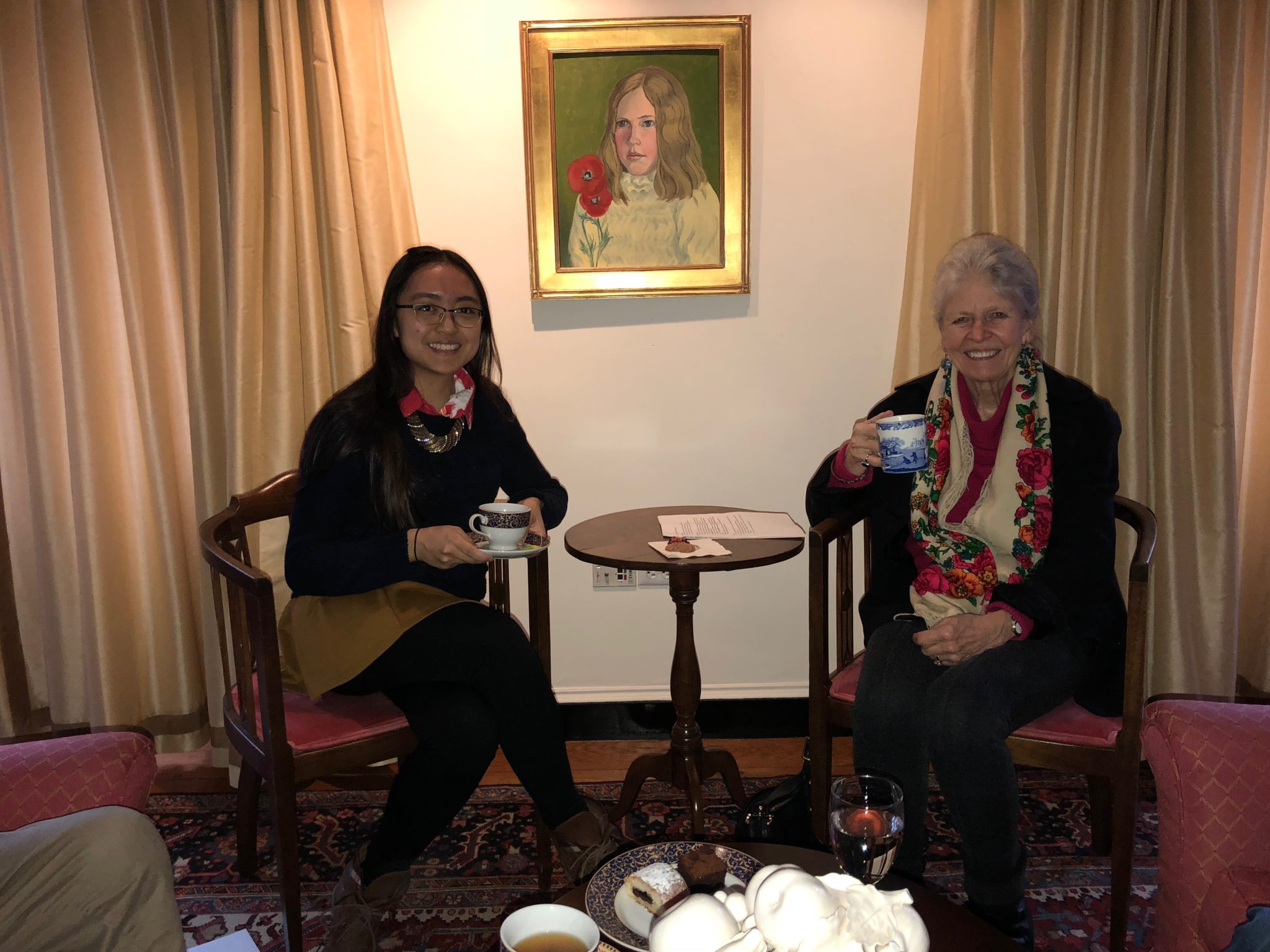
Molecular biologist Joan Steitz spoke about modern scientific advancements, prejudice in science and her own experiences at a wide-ranging college tea on Wednesday.
The event, hosted by Branford College and moderated by Jessica Trinh ’20, drew over 20 students and college affiliates to hear Steitz, who headed the team that discovered snRNPs, a breakthrough in understanding RNA splicing.
Before opening the floor to questions from the audience, Trinh pressed Steitz on her experiences as a female scientist in the mid-to-late 20th century.
“At that point, when I looked around, there weren’t any women who were heading labs. There weren’t any women professors in science, there were a few in other subjects,” Steitz said. “And I didn’t even think, that even though I enjoyed being in the lab making scientific discoveries so much, that I didn’t even think it would be possible for a woman to go on and do something big in science.”
The tea’s Q&A format allowed it to cover a wide range of topics. In response to a question about genetic engineering, Steitz cautioned against impeding human discovery but advocated for a deliberate approach with ethical considerations.
“I don’t believe stifling the advancement of knowledge is good for humankind,” she said. “I believe that this is something that humankind has to do, and we wouldn’t be human if we didn’t seek further knowledge, and it’s both good and bad depending on how it is applied.”
Steitz noted Yale’s retention rates in the sciences, remarking that while 30 to 40 percent of first years express interest in the sciences, only 10 percent still intend to pursue the field at graduation. She noted that smaller liberal arts schools do not see these dropout rates and suggested that reducing class size, increasing student-student interaction in the classroom and offering research positions to any interested student may increase retention rates.
Steitz — whose doctoral adviser was James Watson, one of the discoverers of the structure of DNA — said her college biology textbooks did not even mention double-stranded DNA. After graduating college, she said she intended to apply to medical school but ultimately decided to pursue research after receiving her first independent project in a lab.
Steitz offers her current undergraduate researchers the same opportunity, according to students interviewed who work in her lab.
“She tries to give any new person their own project, and that’s exactly what she did for me,” said Jared Peralta ’19, one of Steitz’s undergraduate researchers who attended the tea.
Eric Li ’20, also in Steitz’s lab, said she is a supportive mentor who helped get him started in research.
Asked to list the qualities of a good mentor, Steitz responded that she aims to make students enthusiastic about research and joyful about the discoveries they make.
“I just want people to be enthusiastic and happy about what they are doing and get joy out of making discoveries and being a scientist,” she said.
Attendees interviewed said they enjoyed hearing about Steitz’s life and experiences.
“She’s both an inspiring researcher and inspiring teacher, but I feel it’s also great to hear her perspective on life, which you don’t always hear about in the classroom,” said Sam Berry ’19, who took a class taught by Steitz last year.
Steitz is married to molecular biophysics and biochemistry professor Thomas Steitz, who won the Nobel Prize in 2009 for his work on the function of the ribosome.
Marisa Peryer | marisa.peryer@yale.edu







